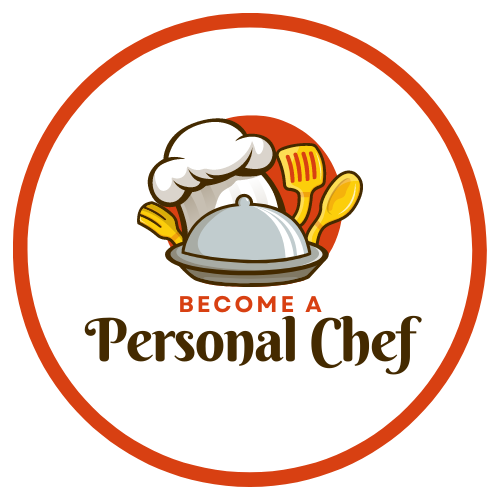Table of Contents
ToggleThai Food for Personal Chefs
As personal chefs, our culinary adventure takes us around the globe, exploring different cuisines and flavors. We are constantly learning and experimenting with new ingredients, techniques, and recipes to create unique and delicious meals for our clients.
Today, we are venturing into the vibrant and tantalizing world of Thai cuisine.
Aspiring personal chefs need to offer something different than traditional chefs who specialize in one or two kinds of cuisines. I’ve written an extensive article with links to many cuisines for your consideration – World Cuisine for Personal Chefs
Key Ingredients in Thai Cuisine
Thai cuisine is characterized by its harmonious blend of flavors and aromas. Some of the key ingredients include fresh herbs such as cilantro, mint, Thai basil, and Vietnamese coriander; vegetables like alliums; coconut milk; chilies; fish sauce; and a variety of spices like ginger, galangal, and turmeric. These ingredients work together to create a balance of sweet, sour, salty, and spicy flavors that make Thai cuisine so unique and delicious.
Herbs:
Fresh herbs are an essential part of Thai cooking. Cilantro is used in many dishes and adds a citrusy, slightly peppery flavor. Mint provides a refreshing element while Thai basil has a licorice-like taste. Vietnamese coriander, also known as rau ram, has a pungent flavor similar to cilantro but with a spicier kick.
Vegetables:
Alliums, including onions, garlic, and shallots, are commonly used in Thai cuisine for their savory and aromatic qualities. Other vegetables like bamboo shoots, mushrooms, and bok choy add texture and nutrients to dishes. Thai eggplant, with its slightly bitter taste, is often used in curries.
Proteins:
Meat, seafood, and tofu are all popular protein sources in Thai cuisine. Chicken, pork, beef, and duck are commonly used in stir-fries and curries while seafood like shrimp, squid, and fish are featured in many soups and salads. Tofu is a great plant-based option that can easily soak up the flavorful sauces in Thai dishes.
Noodles:
Noodles play a big role in Thai cuisine and come in various forms such as rice noodles (pad thai), glass noodles (pad woon sen), and egg noodles (khao soi). They are typically stir-fried with vegetables, protein, and a variety of spices and sauces to create flavorful and satisfying dishes.
Curries:
Thai curries are known for their bold flavors and rich textures. Some popular curry types include red, green, yellow, massaman, and panang. Each type has its own unique blend of herbs and spices, such as lemongrass, galangal, basil, cilantro, and chili peppers. These aromatic ingredients are simmered with coconut milk to create a creamy sauce that pairs well with rice or noodles.
Rice:
Rice is a staple in Thai cuisine and is often served alongside other dishes. Jasmine rice is the most commonly used variety in Thai cooking due to its fragrant aroma and sticky texture. Fried rice (khao pad) is another popular dish that includes stir-fried rice with vegetables, protein, and sometimes eggs.
Noodles:
Noodles are another important component in Thai cuisine. Wide rice noodles (pad thai) are a classic option that can be stir-fried with a variety of ingredients such as shrimp, tofu, and bean sprouts. Thin rice noodles (pad see ew) are often served in a savory soy sauce-based gravy with meat and vegetables. For those looking for a spicier option, drunken noodles (pad kee mao) pack a punch with chili peppers and basil.
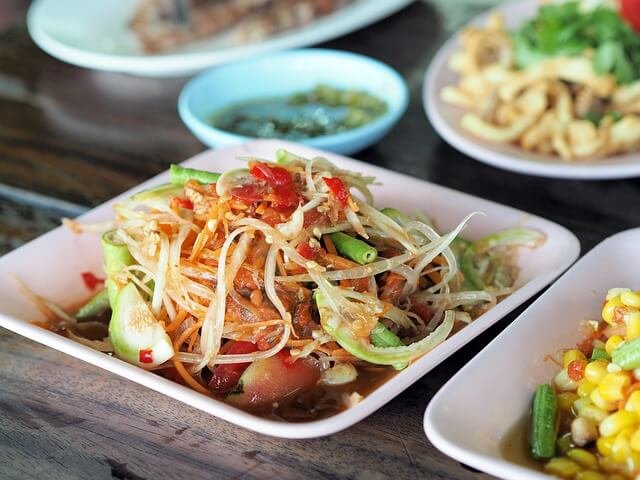
Vegetarian Options:
Thai cuisine offers plenty of options for vegetarians or those looking to incorporate more plant-based meals into their diet. Tofu is often used in stir-fry dishes and curries, providing a hearty source of protein. Additionally, many Thai restaurants offer a variety of vegetable dishes such as stir-fried baby corn, broccoli, and mixed vegetables. Be sure to specify any dietary restrictions or preferences when ordering to ensure the dish is prepared accordingly.
Soups:
Soups are an essential part of Thai cuisine and can be enjoyed as a main dish or side dish. Tom Yum soup is a popular choice with its spicy and sour flavors from ingredients like lemongrass, lime leaves, and chili peppers. For those looking for something milder, Tom Kha soup offers similar flavors but with the addition of coconut milk for a creamier texture. Both soups often include shrimp or chicken, but can also be made vegetarian.
Curries:
No Thai meal is complete without a curry dish. These rich and flavorful stews are made with a base of coconut milk and curry paste, typically featuring ingredients like chili peppers, garlic, ginger, and lemongrass. There are several types of curries to choose from including red, green, yellow, and massaman. Each has its own unique blend of spices and can be customized with your choice of protein such as chicken, beef, or tofu.
Noodles:
Thai noodle dishes are a staple in the cuisine and offer a satisfying blend of flavors and textures. Pad Thai is perhaps the most well-known dish which features stir-fried rice noodles with egg, bean sprouts, peanuts, and your choice of meat or tofu. Other popular noodle dishes include Pad See Ew, made with wide rice noodles, dark soy sauce, and Chinese broccoli, and Drunken Noodles which are spicy stir-fried noodles with basil and chili peppers.
Salads:
Thai salads are known for their bright flavors and refreshing ingredients. The most famous Thai salad is Som Tum, also known as green papaya salad. It’s made with shredded unripe papaya, tomatoes, peanuts, and a tangy dressing of lime juice, fish sauce, and palm sugar. Other popular salads include Larb Gai (spicy minced chicken salad) and Yum Woon Sen (glass noodle salad).
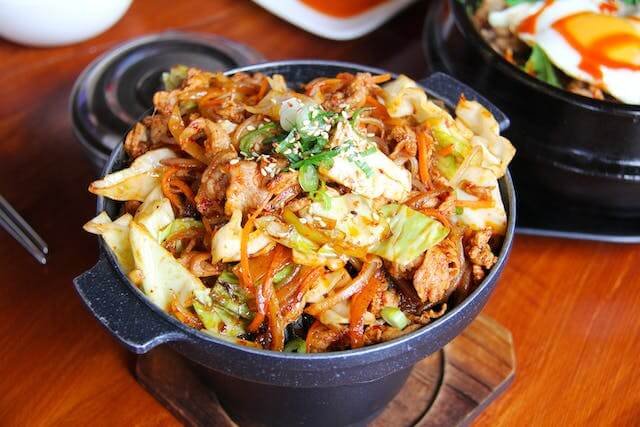
Sourcing Ingredients Locally
While many of these ingredients can be found in local supermarkets, some might require a visit to a specialty Asian grocery store. If certain ingredients are not available locally, suitable substitutes can often be found. The key is to source the freshest, highest quality ingredients possible.
At The Organic Personal Chef, I take great pride in sourcing our ingredients from local farms and businesses. I believe that supporting and promoting our local economy is not only beneficial for our community, but it also ensures that I am providing our clients with the freshest and most nutritious food possible.
My commitment to using locally sourced ingredients goes hand in hand with our belief in sustainable and ethical practices. By using ingredients grown or produced within a certain radius of our kitchen, we reduce the carbon footprint associated with transportation and support small-scale farmers who use environmentally-friendly methods.
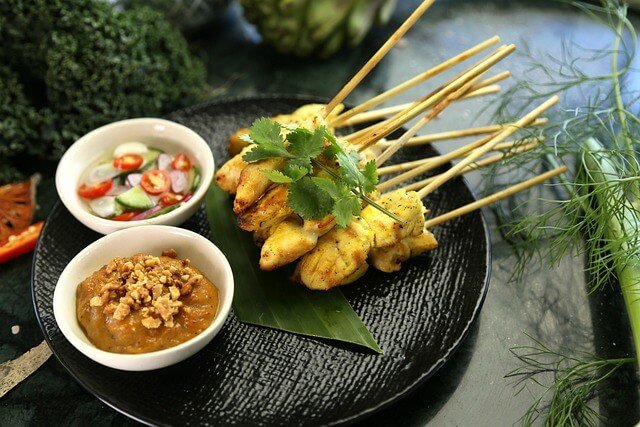
Traditional Cooking Methods
Thai cuisine employs a variety of cooking methods, including grilling, stir-frying, steaming, and boiling. These methods have been used for centuries and are a key component of traditional Thai cooking. The use of traditional methods not only adds flavor to the dishes, but it also preserves the nutritional value of the ingredients.
Grilling is a popular cooking method in Thai cuisine, often used for meats and seafood. The intense heat from the grill quickly cooks the food, giving it a smoky flavor. Marinating with herbs and spices is common in Thai grilling, adding an extra layer of flavor to the dish.
Stir-frying is another essential technique in Thai cooking. This method involves cooking small pieces of meat or vegetables over high heat in a wok or skillet. The quick cooking time ensures that the ingredients retain their crunchiness and natural flavors.
Steaming is another popular cooking technique in Thai cuisine. This method involves cooking food over boiling water, allowing it to retain its moisture and nutritional value. Steamed dishes are often light and healthy, making them a popular choice for those watching their diet.
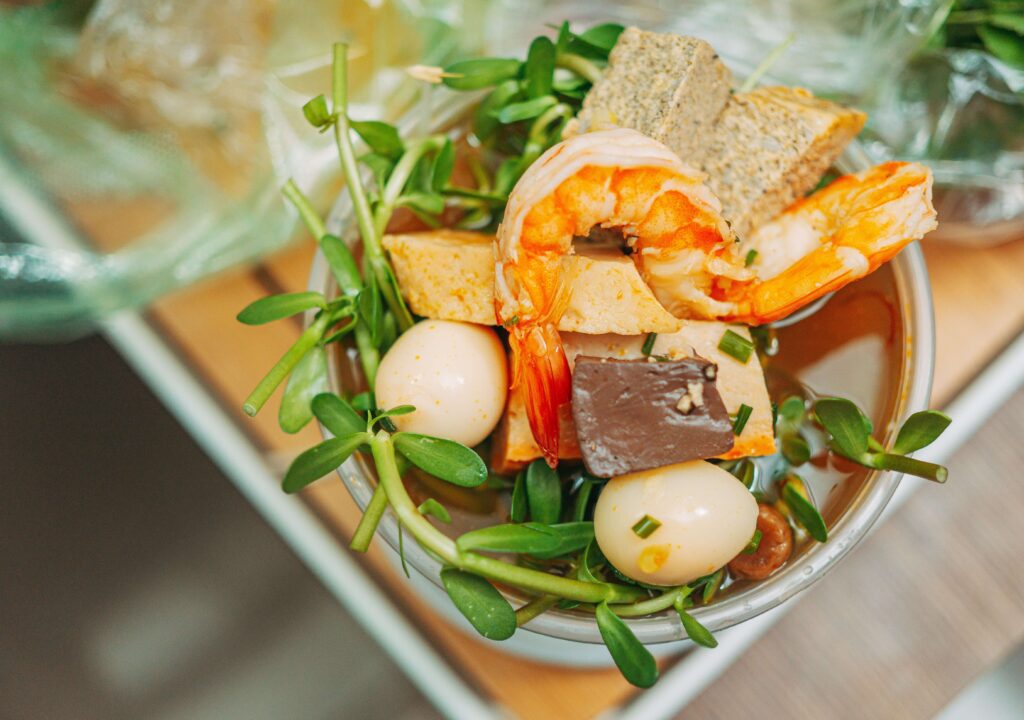
Dominant Flavors of Thai Cuisine
Thai cuisine is known for its complex interplay of four fundamental taste senses: sweet, sour, salty, and bitter, with optional spicy heat. These flavors are carefully balanced to create dishes that are both bold and harmonious.
Sweetness is often found in Thai cuisine from the use of palm sugar, coconut milk, and fruits such as pineapple and mango. Sour notes come from ingredients like lime juice, tamarind, and vinegar. The salty taste comes from fish sauce, which is used in many savory dishes. Bitterness can be found in herbs like bitter melon or bitter gourd, and also in certain greens and spices such as turmeric.
Thai food is known for its spiciness, but it’s important to note that not all Thai dishes are hot. Instead, heat is added through the use of chilies, whether fresh or dried. The level of spiciness can be adjusted to suit individual preferences, making Thai food a versatile option for those who may have different spice tolerances.
Another important aspect of Thai cuisine is the use of fresh herbs and spices. Lemongrass, galangal, kaffir lime leaves, and cilantro are just a few examples of aromatic ingredients commonly used in Thai cooking. These ingredients not only add unique flavors but also provide health benefits such as anti-inflammatory and antioxidant properties.
In addition to these key components, balance is crucial in Thai food. The perfect dish should have a combination of sweet, sour, salty, bitter, and spicy flavors. This balance creates a complex flavor profile that keeps diners coming back for more.
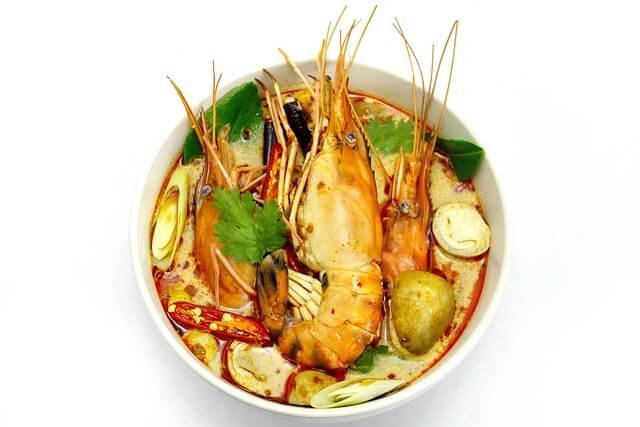
Spice Level Adjustment
While Thai cuisine can be spicy, the spice level can usually be adjusted to suit your client’s preference by using less of the spicy ingredient or eliminating it altogether. Many Thai dishes use a combination of sweet, sour, salty and spicy flavors to create a balanced dish. So even if your client prefers milder food, they can still enjoy the full range of delicious Thai flavors.
At The Organic Personal Chef, I understand that everyone has their own unique taste preferences and dietary restrictions. That’s why I adjust the spice level in our meals to suit each client’s individual needs. Whether your client is sensitive to spice or loves it extra hot, we can accommodate their requests.
Cultural Significance of Thai Cuisine
Thai cuisine reflects the culture, environment, and history of Thailand. Meals are often seen as a time for family gatherings and celebrations, and many dishes have a story behind them that reflects the history and culture of the country. Thai cuisine is known for its aromatic and spicy flavors, making it a popular choice for those seeking a unique culinary experience.
The History of Thai Cuisine
Thai food has been influenced by many different cultures throughout history. The first settlers in Thailand were the Mon people, who brought their own cooking techniques and ingredients. Later on, Chinese and Indian traders also introduced new spices and cooking methods to the country.

Health Considerations
Thai cuisine is considered healthy due to its emphasis on fresh fruits and vegetables, lean proteins, and heart-healthy fats from coconut milk. However, there are still some health considerations to keep in mind when indulging in this flavorful cuisine.
Food Allergies: Thai dishes often contain a variety of ingredients such as peanuts, shellfish, and soy sauce which can trigger allergies for some individuals. If your client has food allergies or dietary restrictions, make sure to communicate that you they can accommodate their needs.
Sodium Intake: Many Thai dishes use fish sauce and soy sauce as main flavoring agents, both of which are high in sodium. For those with high blood pressure or other health conditions that require a low-sodium diet, it’s important to be mindful of your consumption and ask for lighter seasoning options.
Spicy Level: Thai cuisine is known for its spicy flavors, but not everyone can handle the heat. If your client is sensitive to spice, be sure tell them to ask for a milder version of the dish or request that they go easy on the chili peppers.
Vegetarian/vegan Options: While Thai food typically includes meat and seafood, there are also plenty of delicious vegetarian and vegan options available. Make sure to check with the client of recommendations or modifications to make their meal plant-based.
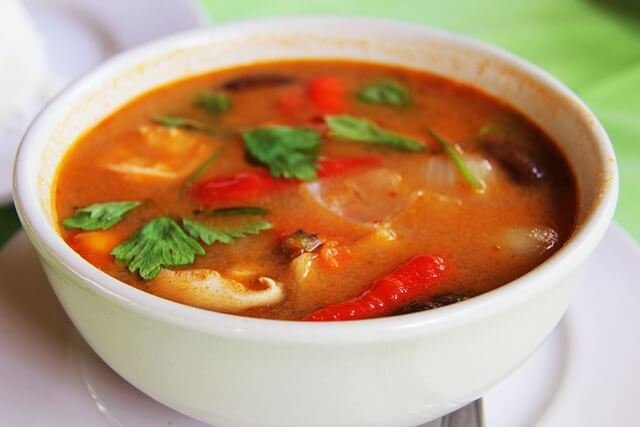
Traditional Accompaniments
A traditional Thai meal often includes a variety of dishes served with steamed jasmine rice or noodles. Desserts often feature tropical fruits, while popular drinks include Thai iced tea and Singha beer.
Here are some of the most common dishes and accompaniments you might find at a traditional Thai meal:
Tom Yum Soup
This hot and sour soup is a staple in Thai cuisine. Made with lemongrass, lime, galangal, and chilies, it packs a flavor punch that will have your taste buds dancing.
Pad Thai
One of the most famous Thai dishes, pad thai is made with stir-fried rice noodles, tofu, bean sprouts, egg, and your choice of meat or seafood. Topped with crushed peanuts and a squeeze of lime juice, it’s the perfect balance of sweet and savory.
Green Curry
Another popular dish in Thailand is green curry. This spicy coconut-based curry is made with chicken, vegetables, and fragrant herbs and spices. It’s typically served with rice to balance out the heat.
Mango Sticky Rice
For a sweet ending to your meal, try mango sticky rice. Fresh slices of ripe mango are paired with warm sticky rice coated in coconut milk for a delicious and indulgent dessert.
Presentation
In Thai cuisine, the presentation is simple yet appealing, with an emphasis on the vibrant colors of the fresh ingredients themselves rather than elaborate garnishes. The dishes are served family-style, encouraging a communal dining experience. This reflects the values of togetherness and sharing that are deeply ingrained in Thai culture.
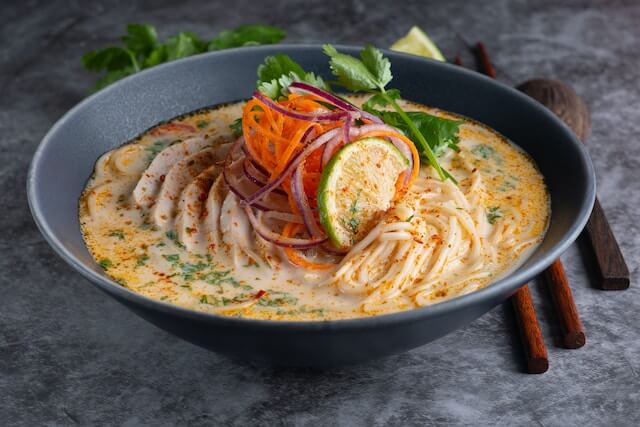
Common Variations
Thailand‘s diverse regions each have their unique flavors and dishes. For example, the region of Isan is known for its spicy salads and fermented fish, while Southern Thailand is famous for its rich currie. No matter which region you are in, there will always be a variety of fresh fruits and vegetables available, making it easy to find healthy options for your meals.
One popular variation of Thai cuisine is street food. Street vendors can be found all over Thailand, offering a wide range of dishes at affordable prices. This type of food is often fast and convenient, perfect for those on-the-go or looking for a quick meal. However, it’s important to note that hygiene standards may vary among different vendors, so make sure to choose ones that look clean and have a high turnover rate.
Another popular variation is vegetarian or vegan Thai food. With its abundance of fresh produce and flavorful spices, it’s no surprise that Thailand has some amazing vegetarian and vegan options.
Preparation and Equipment
Some Thai dishes may require specific equipment, like a wok for stir-frying or a mortar and pestle for making curry pastes. Certain elements of a dish, like marinated meats or soaked sticky rice, may need to be prepared ahead of time.
Here are some kitchen items a personal chef should have for preparing Thai cuisine on a cookdate:
An essential tool for making Thai pastes, sauces, and salads. The mortar and pestle are used to crush and grind ingredients, which helps to release their full flavor. Made of food grade stainless steel, the mortar set is solidly constructed, durable, anti-rust, anti-corrosion.
Since rice is a staple in Thai cuisine, a rice cooker is a must-have tool for ensuring perfectly cooked rice every time. The large rice cooker steamer holds up to 10 cups of cooked or 5 cups of uncooked rice to easily feed the whole family.
Used for cooking sticky rice, dumplings, and certain types of desserts. Zocy Premium Expandable Steam Basket to Fit Various Size Pots Medium
A large pot for making broths and soups, like the famous Tom Yum soup. All-Clad D3 3-Ply Stainless Steel Stockpot 8 Quart Induction Oven Broiler Safe 600F Pots and Pans
A good quality, sharp chef’s knife is necessary for precise cutting and slicing of ingredients. Global G-2-8″ Chef’s Knife
A sturdy chopping board is needed for preparing ingredients. A Good simple cutting board
Used for grating fresh coconut, ginger, and other ingredients. Kitchen Must-Have: Sharp Stainless Steel blades get the job done quickly and result in cleanly sliced and grated food.
Useful for turning and handling food, especially when deep-frying or grilling. Kitchen Tongs, U-Taste 7/9/12 inches Cooking Tongs, with 600ºF High Heat-Resistant Non-Stick Silicone Tips
Essential for serving soups and curries. All-Clad Professional Stainless Steel Kitchen Gadgets and Caddy 6 Piece Kitchen Tools,
A wide spatula is useful for stir-frying and turning food in the wok. Silicone Cooking Utensil Set, Umite Chef Kitchen Utensils 15pcs Set
A handy tool for extracting juice from limes, which are frequently used in Thai cooking. Zulay Kitchen Cast-Iron Orange Juice Squeezer – Heavy-Duty, Easy-to-Clean, Professional Citrus Juicer
Wondering what tools a personal chef might need? I’ve written an extensive article for you – A Comprehensive List Of Must-Have Tools and Essential Items for the Personal Chef
Remember, investing in high-quality tools can greatly enhance your cooking experience and the outcome of your dishes. Keep them well-maintained for the best results.
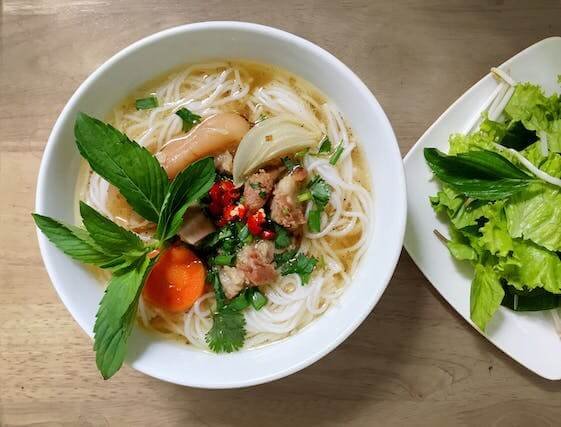
Personalizing Thai Cuisine
Personalizing Thai dishes while maintaining authenticity can be achieved by adjusting flavors to suit personal preferences, substituting ingredients based on dietary needs, or presenting dishes in creative ways.
Thai Food for Personal Chefs
Exploring and cooking Thai cuisine offers an exciting culinary journey. By understanding its key ingredients, techniques, and cultural significance, we can bring the authentic taste of Thailand to our clients’ dining tables.
Here are some of my favorite tools for providing my personal chef service
As an experienced personal chef, I’ve found that the secret to creating mouthwatering dishes goes beyond just having a passion for food. It’s also about using the right kitchen tools. Today, I’m going to share with you my must-have kitchen items that help me bring my culinary creations to life.
1. Chef’s Knife
The first item on my list is a high-quality chef’s knife. It’s the most versatile tool in my kitchen, perfect for chopping, slicing, and dicing. My preference is for a Global Chef’s Knife, known for the edge and the way they are balanced.
2. Cast Iron Skillet
Next up is a good old cast-iron skillet. From searing steaks to baking cornbread, this pan does it all. I love the Lodge Cast Iron Skillet, which retains heat beautifully and adds a nice crust to anything you cook.
3. Stainless Steel Pots and Pans
A set of stainless steel pots and pans is essential for a variety of cooking techniques. They’re great for simmering, boiling, and sautéing. All-Clad’s Stainless Steel Cookware Set is my go-to choice for its exceptional performance and durability.
4. Immersion Blender
An immersion blender makes pureeing soups, making smoothies, and blending sauces a breeze. I suggest the Braun Multiquick Hand Blender, which is powerful, easy-to-clean, and highly versatile.
5. Digital Thermometer
To ensure perfectly cooked meats every time, a digital thermometer is a must. The ThermoPro TP19 Waterproof Digital Meat Thermometer provides speedy and accurate readings, ensuring your roast chicken or prime rib is cooked to perfection.
6. Silicone Spatula
A silicone spatula is a chef’s best friend for its versatility. It’s heat-resistant, non-stick, and perfect for everything from folding batter to stirring sauces. I recommend the OXO Good Grips Silicone Spatula.
7. Stand Mixer
Lastly, for avid bakers, a stand mixer is a game-changer. The KitchenAid Artisan Series 5-Qt. Stand Mixer isn’t just a pretty face; it makes mixing doughs and batters effortless.
These are the tools that I use daily in my personal chef service. Remember, quality tools make a difference, but they don’t have to break the bank. Start with the basics and add on as you grow more comfortable and adventurous in the kitchen.
Happy cooking!
